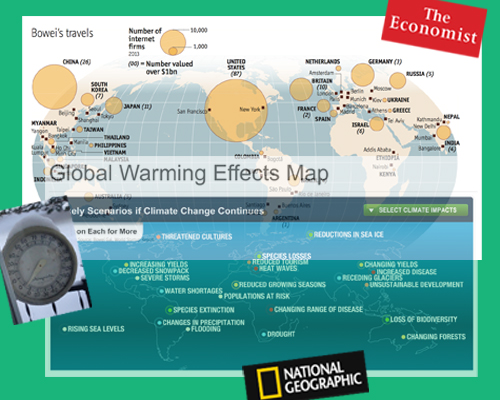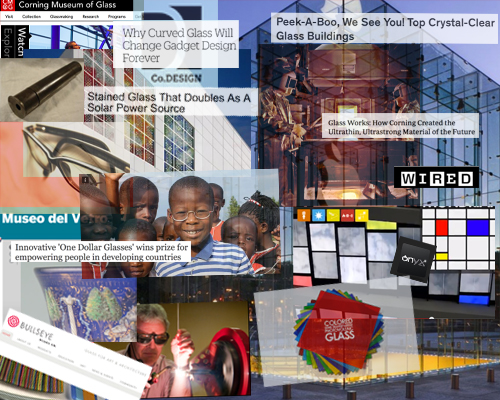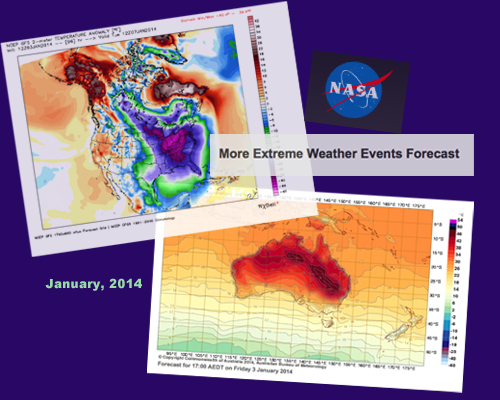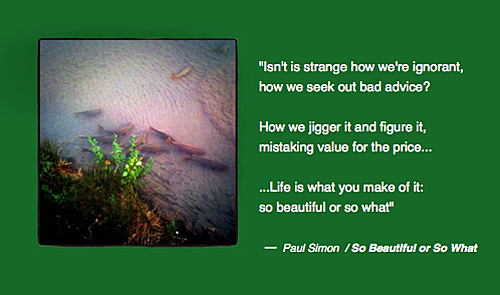| It turns out the snow pack they are so desperate for in California’s Sierra Nevada has instead landed, flake by elegant flake, right here in Chicago this year. It has been yet another shovel-in-hand weekend, with yet another 3 to 6 inches expected on Tuesday. Still, despite the misery and inconvenience, all this freak weather could play to Chicago’s competitive advantage in tech—and most everything else, too. Rarely does climate change figure into discussions about tech ecosystems. It should. Everything about tech, from developer talent to data storage to financing, can shift to greener pastures pretty quickly. A special report on tech startups in the Economist magazine noted : "…This digital feeding frenzy has given rise to a global movement. Most big cities, from Berlin and London to Singapore and Amman, now have a sizeable startup colony (ecosystem). Between them they are home to hundreds of startup schools (accelerators) and thousands of co-working spaces where cafeinated folk in their 20s and 30s toil hunched over their laptops. All these ecosystems are highly interconnected, which explains why internet entrepreneurs are a global crowd. Like medieval journeymen, they travel from city to city, laptop, not hammer, in hand. A few of them spend a semester with "Unreasonable at Sea", an accelerator on a boat which cruises the world while its passengers code. Anyone who writes code can become an entrepreneur anywhere in the world, says Simon Levene, a venture capitalist in London…” (emphasis added) California’s extreme drought could, according to experts, turn into a decades or even centuries-long megadrought. Meanwhile, rising sea levels on the East Coast mean even average storms can trigger billion-dollar disasters (see Sandy). This is not good news for anybody, but the most severe costs will be felt locally. Both New York and San Francisco are already dealing with an anti-tech blowback driven by spiraling housing costs ("These 2 cities are now exclusively for rich people","Tech’s growing problem in San Francisco") The impacts of climate change will make an already bad situation worse. There is hardly a spot on the planet that isn’t off-kilter weatherwise. Italy and France are dog-paddling through record floods (seriously not the moment to go Florence.). Australia is sweating through a record summer. The World Economic Forum now ranks extreme weather number 6 on its list of Global Risks, singling out Asia as being particularly vulnerable: "…Japan’s Tokyo, Manila in the Philippines and China’s Pearl River Delta region—one of the most densely urbanized areas in the world—top Swiss Re’s list of cities most at-risk in terms of population. Only one non-Asian city, Los Angeles, made the top 10. The insurer named the Pearl River Delta—which includes Hong Kong, Shenzhen, Dongguan, Macau and Guangzhou—as number one when looking at the number of people potentially affected by storm, storm surges and river floods…” If you are looking for a “pain point,” climate change is the big one, affecting everything from supply chains to blood banks. As high as Chicago’s snow piles and deep as its pot holes may be, our city may find itself in a better position than most to find opportunity in this rather bleak global weather forecast. Some of the same factors that made Chicago interesting to settlers two centuries ago are still in play today: Lake Michigan, a central location and nearby some of the best farmland in the world. Add to that a deep bench in manufacturing, engineering, architecture and design and a uniquely compelling picture emerges. Today, when it seems as if every city uses the same economic development playbook (accelerators! incubators! investors! universities!), competitive advantage requires a bigger picture perspective. BOOTSTRAPPING Adrian Holovaty’s presentation on bootstrapping at the recent CEC Startup Showcase has sparked considerable discussion on the Built in Chicago blog—and beyond—about the city’s place in the tech universe and how best to measure success. (“Is Chicago’s tech community in search of a new identity?”) Is bootstrap culture our strength? Is it diversity as Matt Moog suggests? Should it be measured in VC investment dollars? Almost everything now is either a tech-driven or tech-enabled business,so what really counts is the blend. Positioning the tech sector as an economic savior is disingenuous. The real money in tech is as a value-add. Bits meet atoms. Google is in the thermostat business, while Tesla cheerfully disrupts the auto industry. Chicago’s budding bootstrap community, which includes hardware as well as software developers (with considerable overlap between the two) could serve as a much needed catalyst, strengthening the connections between the city’s manufacturing, engineering, design, architecture and tech sectors. In fact, a new co-working space set to open later this month called Catalyze Chicago in the West Loop will prototype a new kind of co-working space for product developers. Its list of advisors is impressive, including software and hardware heavyweights and a few Kickstarter veterans (As Catalyze grows, it would be wonderful to see some women industrial designers and product developers added to the mix.) The more opportunity for these different worlds to connect, the more potential there is for productive and profitable collaborations. Ironically, the segregation of tech-haves and have-nots causing so much unease on the coasts is also a creative buzzkill. When the best and brightest are shuttled back and forth within the cushy confines of corporate buses and provided company-catered meals morning, noon and night, they end up silo’ed with an ever-narrowing vision of the world. Bootstrappers have to reach out and collaborate. It is their resilient edge. I would love to see a sector-bridging public lecture series in Chicago: ”AIA night at 1871” “Urban Ag Night at 1871” “Kickstarter Night at 1871” ”Theatre Tech at 1871.” There so much potential yet to be tapped. Now, we just need someone to invent a self-healing pot hole-impervious asphalt and we’ll really be in business. — J. A. Ginsburg / @TrackerNews (reprinted from the Built in Chicago blog) |
|
0 Comments
|
BackgroundDot to Dot grew out of the TrackerNews Project, a demo news aggregator developed for InSTEDD, an independent spin-off of Google.org's humanitarian practice that focused on health issues, humanitarian response and technology. Archives
• Bats, Trees And Bureaucrats: Ebola And How Everything, Positively Everything, Connects • Scrubba Dub Carlos and the Big Bad Enterovirus: Why Sneeze When You Can Sing? • Ebola, Bats and Déjà Vu All Over Again • Scaling Good: Project Frog’s Buildings And The Kitchen Community’s Learning Gardens • Thumbs Up And High Fives: Evolution, Hands And 3D Printing • Legos, Makers, Molecules, Materials And The Very Big Business Of Small Things • Solid: When Bits and Atoms Dance • Science Hack Day Chicago 2014: Reinventing The Space Suit, Cosmic Biomicmicry And The Joy Of Thinking Different • The Motors of August Cicadas • Mulling Snow, Climate, Pain Points, Bootstrapping And Chicago’s Advantage • Glass, Tech And Civilization: The Material That Makes Just About Everything Better • A Tale Of Two Maps And Why You Can’t Teach An Old Grid New Tricks • When Bad Things Happen To Good Content: Form(At), Function, Perspective And Possibilities • The Sum Of Its Parts: Autozone Meet Autodesk (Please) / On Supply Chains, Carbon Footprints And How 3D Printing Can Change The Game (Again) • It Takes An Economist: Tallying Natural Capital • Beyond Measure: Da Vinci’s Genius, Peripheral Vision, The Prepared Mind, Metric Traps And Hacking The Filter Bubble A Solstice Encore: Imaginary Carl Sagan, A Holiday Mix Tape And The Tannahill Weavers Categories
All
|






 RSS Feed
RSS Feed







